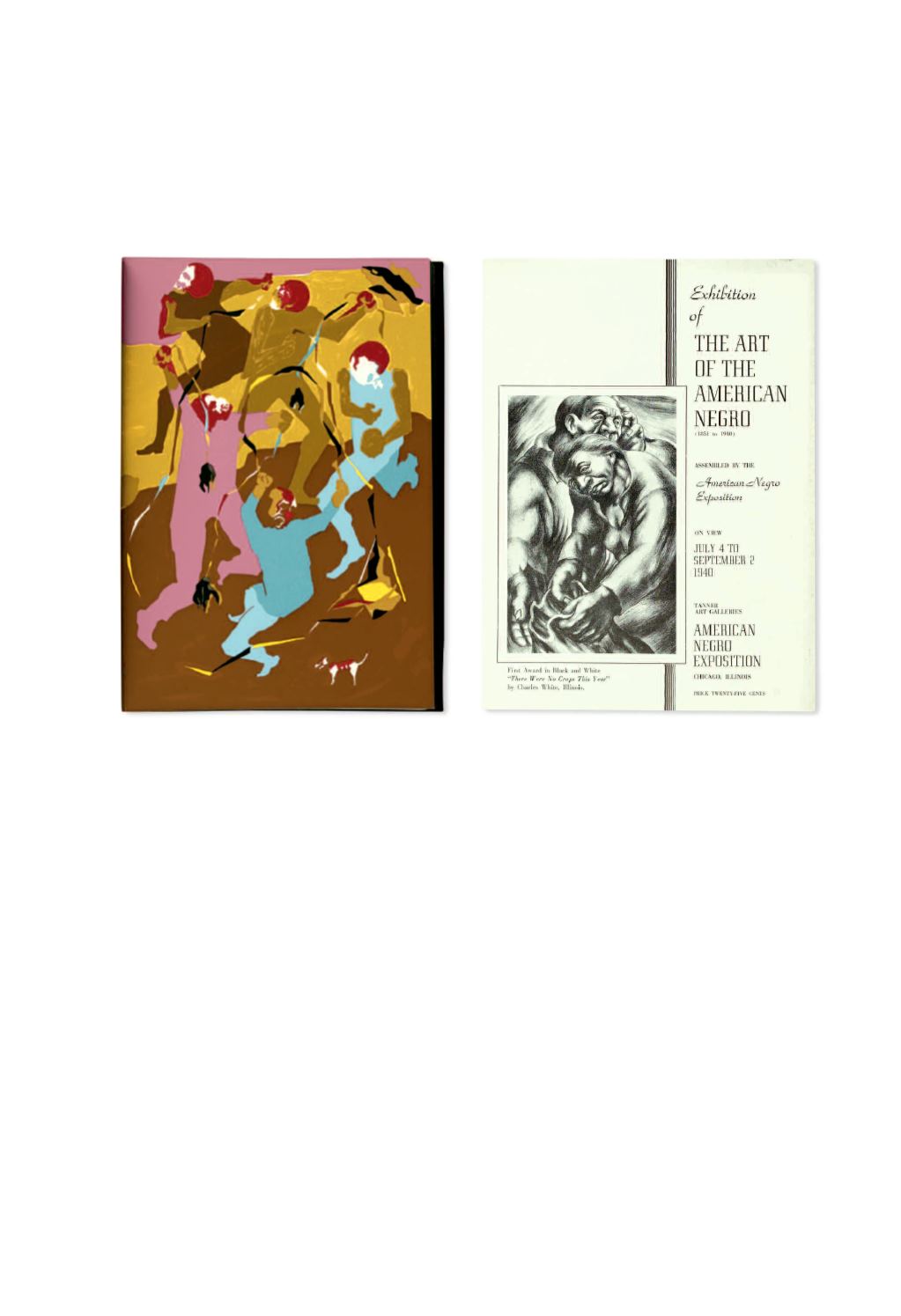

INSCRIBED TO MAYA ANGELOU
140
●
(ART.) LAWRENCE, JACOB.
“And the Migrants kept Coming. . . “
26
color illustrations from his 60-panel “Exodus” series, printed here on seven pages in
Fortune Magazine.
INSCRIBED BY LAWRENCE
“
FOR MAYA ANGELOU
, J
ACOB
L
AWRENCE
1/9/87.”
New York, November 1941
[600/900]
Jacob Lawrence (1917-2000) was the first African-American artist to cut across color lines with this
article on his “Exodus” series.
141
●
(ART.) LAWRENCE, JACOB.
Hiroshima, by John Hersey with a new
poem by Robert Penn Warren, Illustrated by Jacob Lawrence.
Oblong black ani-
line cowhide, with matching leather slipcase.
Limited Editions Club: New York, 1983
[1,500/2,500]
FIRST EDITION THUS
,
ONE OF
1500
NUMBERED COPIES SIGNED BY HERSEY
,
WARREN AND
LAWRENCE
.
A beautiful book with eight silkscreens printed in eleven colors at the Studio Heinrici,
New York. Sidney Schiff the publisher said of the book “We have tried to extract something beautiful
from the hell that was Hiroshima.”
142
●
(ART.) [LOCKE, ALAIN.]
Exhibition of the Art of the American Negro
(1851-1940). Assembled for the American Negro Exposition.
16 pages. Large 4to,
original pictorial black and white wrappers.
AN EXCEPTIONAL COPY
.
Chicago: American Negro Exposition, 1940
[1,500/2,500]
Front cover illustration of an award-winning drawing by Charles White, with 16 other black and
white illustrations of paintings, water-colors and sculpture by Robert Duncanson, Frederic Flemister,
Eldzier Cortor, Marvin Smith, William Carter, Hales Woodruff, Jacob Lawrence, Lois Maillou Jones,
E. Simms Campbell, Donald Reid, Robert Blackburn, Elizabeth Catlett, Richmond Barthe, Sargent
Johnson and Joseph Kersey—more than 300 individual pieces displayed at the Tanner Galleries in
conjunction with the Historic American Negro Exposition. An historic exhibition, which Alain
Locke, “Father of the Harlem Renaissance,” hailed in his preface as the “most comprehensive and rep-
resentative collection of Negro art that has ever been presented to public view.”
141
142









